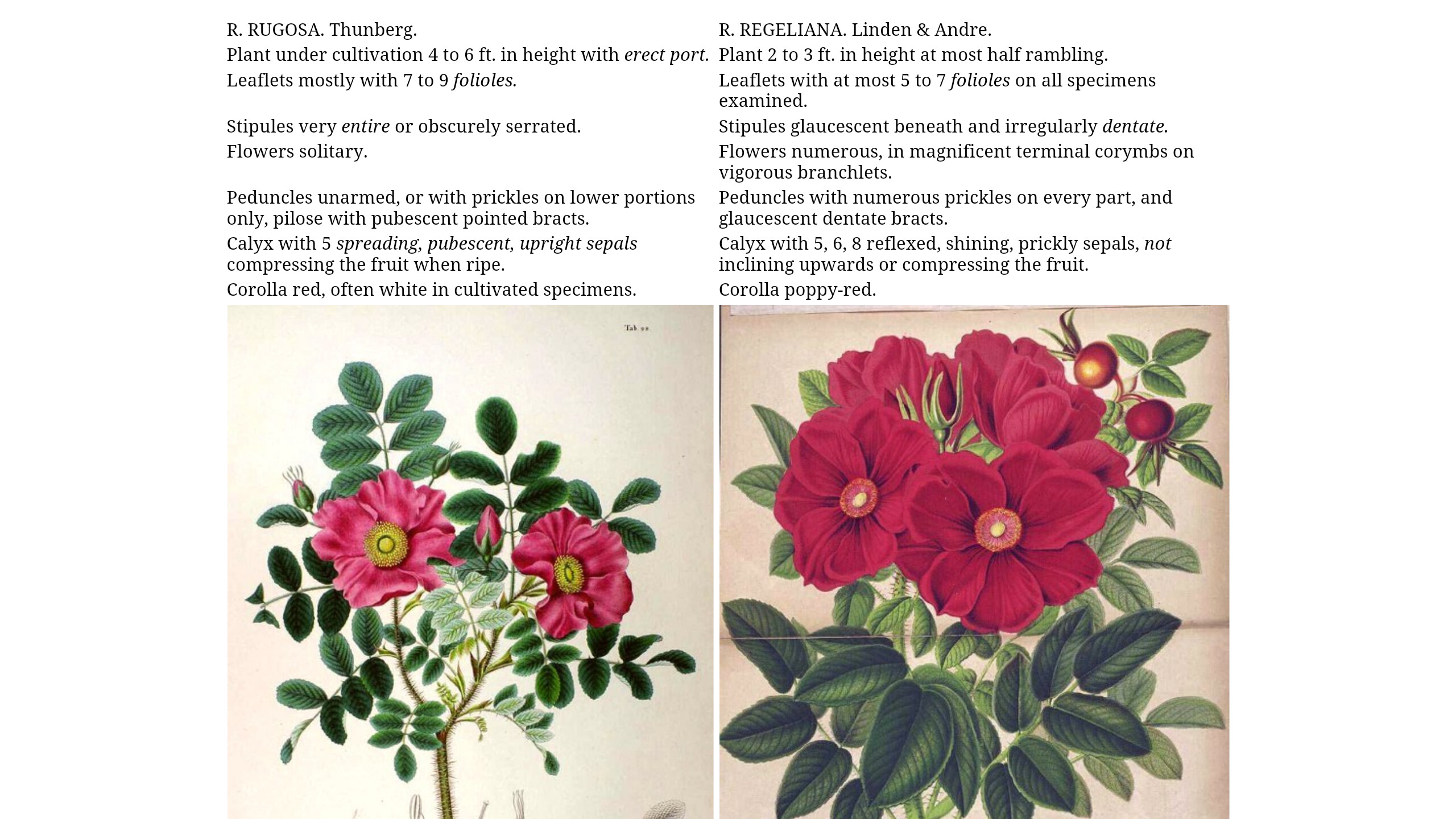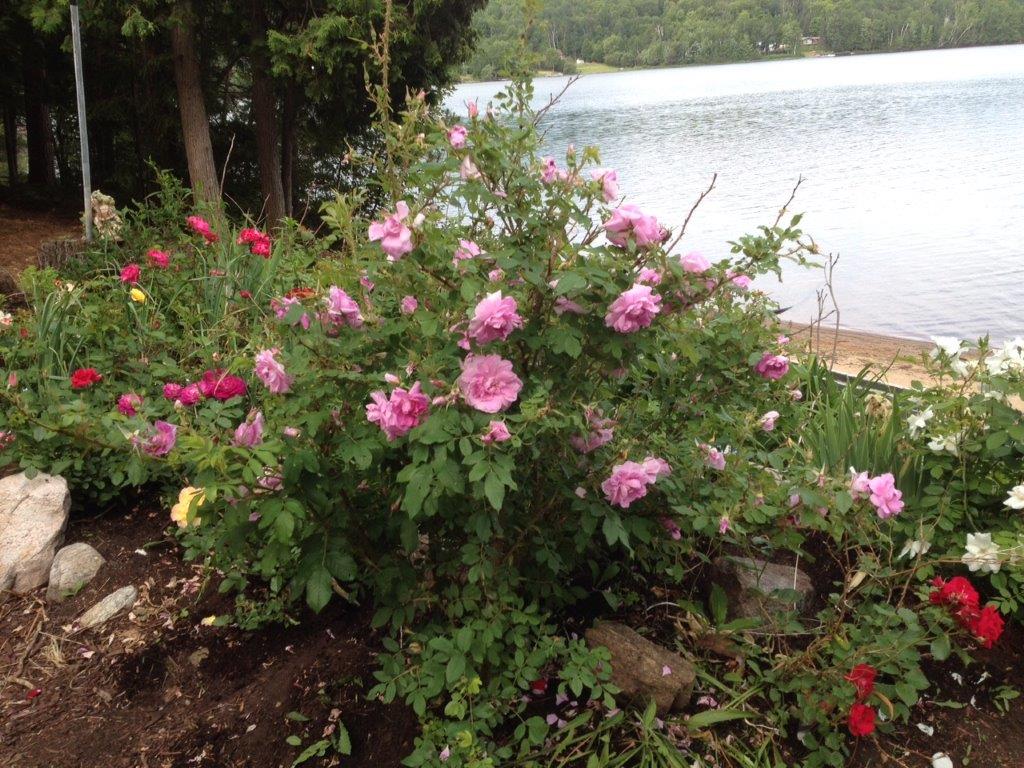Prof. L. H. Bailey (1892) discussed the Russian Rugosas that Budd brought back from his travels.
“The double form of the rose shown in fig. 2 is also an introduction by Professor Budd from Russia. It seems to belong to the rugosa strain, and is known as R. cinnamomea. The blooms are six inches across, quite double, crimson in color, not quite so glowing as the type of rugosa, but more fragrant. The leaves are slightly serrated, bright green and leathery.”
http://bulbnrose.x10.mx/Roses/breeding/BaileyRugosas1892/BaileyRugosas1892.html
It is suggestive that this rose was known as R. cinnamomea, because both Ventenat and Lindley commented that R. kamschatica was NOT very much like that species.
And another thought. John Fraser, the plant explorer who took the Pink Musk hybrids (presumably Champneys’) to England, also took these roses, and a choice collection of other American plants to Russia in 1796. He sold them to Empress Catherine. He must have returned to England the same year, because the following year, when Catherine died, he received an invitation through Count Woronzoff to bring another collection of plants to Russia for the Imperial Garden of Empress Maria.
I have not found any report that Fraser took Russian plants back to England (how could he not?), so it may be just another interesting coincidence that Rosa ferox reportedly turned up in England in 1796.
Just found it: “While there, he bought Black and White Tartarian cherries in 1796, thereafter introducing them for the first time to England.”
https://en.wikipedia.org/wiki/John_Fraser_(botanist)
Karl


